6 Easy Steps to Install a Clutch on Predator 212
Installing a new clutch on your Go Kart project might seem complicated, but in reality, the process is really simple. In this article, we will go through the installation process of clutches that use bolts to be installed, there are a few clutches that uses set-screws but the best clutches these days come with just a bolt and lock washers.
If you’re installing a brand new clutch onto a brand new engine then there are just 4 steps involved:
- Oil or Greese the bushing of the clutch
- Insert a 3/4“ spacer or washers on the Crankshaft
- Place the Clutch into the Crankshaft by aligning the key of the clutch and the slot in the shaft
- Tighten the bolt
If you’re changing the clutch on a used engine or installing a used clutch, then there 2 extra steps:
- Cleaning the crankshaft: Make sure to remove all the burrs on the crankshaft with the help of file or a sandpaper.
- Applying an anti-seize: This will prevent galling (wear caused by Adhesion) and make disassembly easy. Since some clutches do not use a brass bushing, the contact between the clutch and shaft is direct metal to metal and such lubricants are required to prevent wear. You can also do this on a brand new engine if you’d like to.
And after that the same steps as installing a new clutch.
If you’re getting confused, don’t worry, just read on, the pictures will make each step very clear. (Use the table of content to navigate)
Step by Step Clutch Instalation:
Step 1: Oil or Greese the bushing of the clutch
The clutches that you receive from the package comes in dry, so it is highly recommended to lubricate the clutch before you use it. It is not a “must-do” because you can Oil the clutch after your first use when the clutch is already heated up. But still better to lubricate before use.
- Remove the snap ring : you can do this with 2 flat screwdrivers or a snap ring plier.

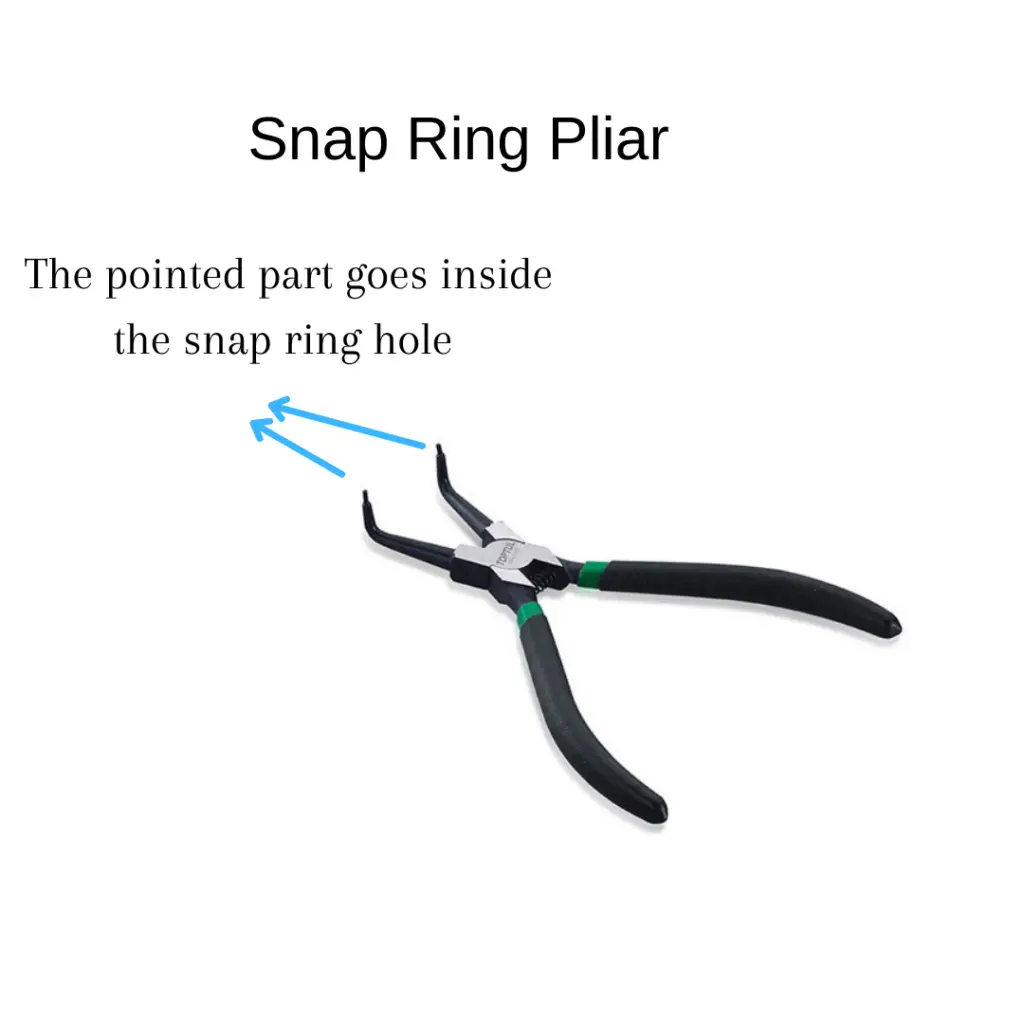
2. Take off the drum part of the clutch: Once the ring is off, you can easily take out the drum.
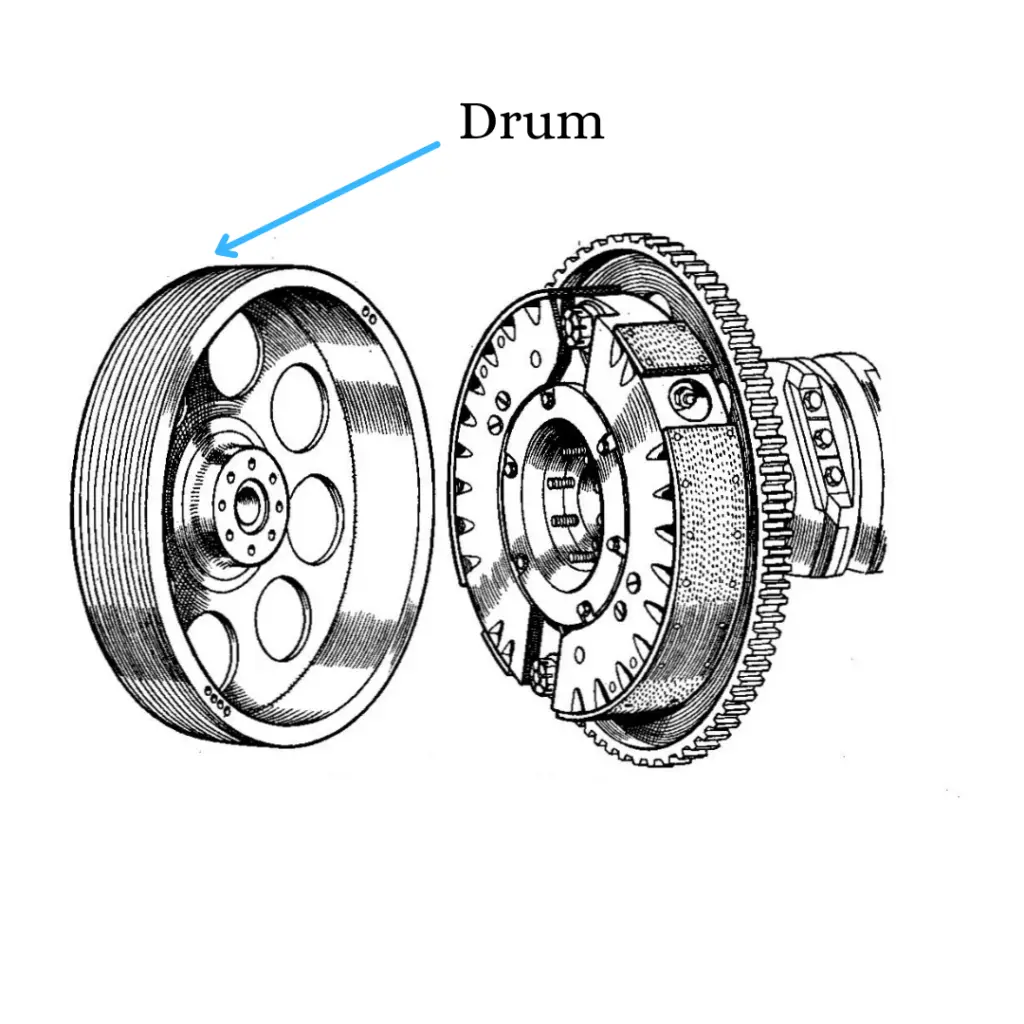
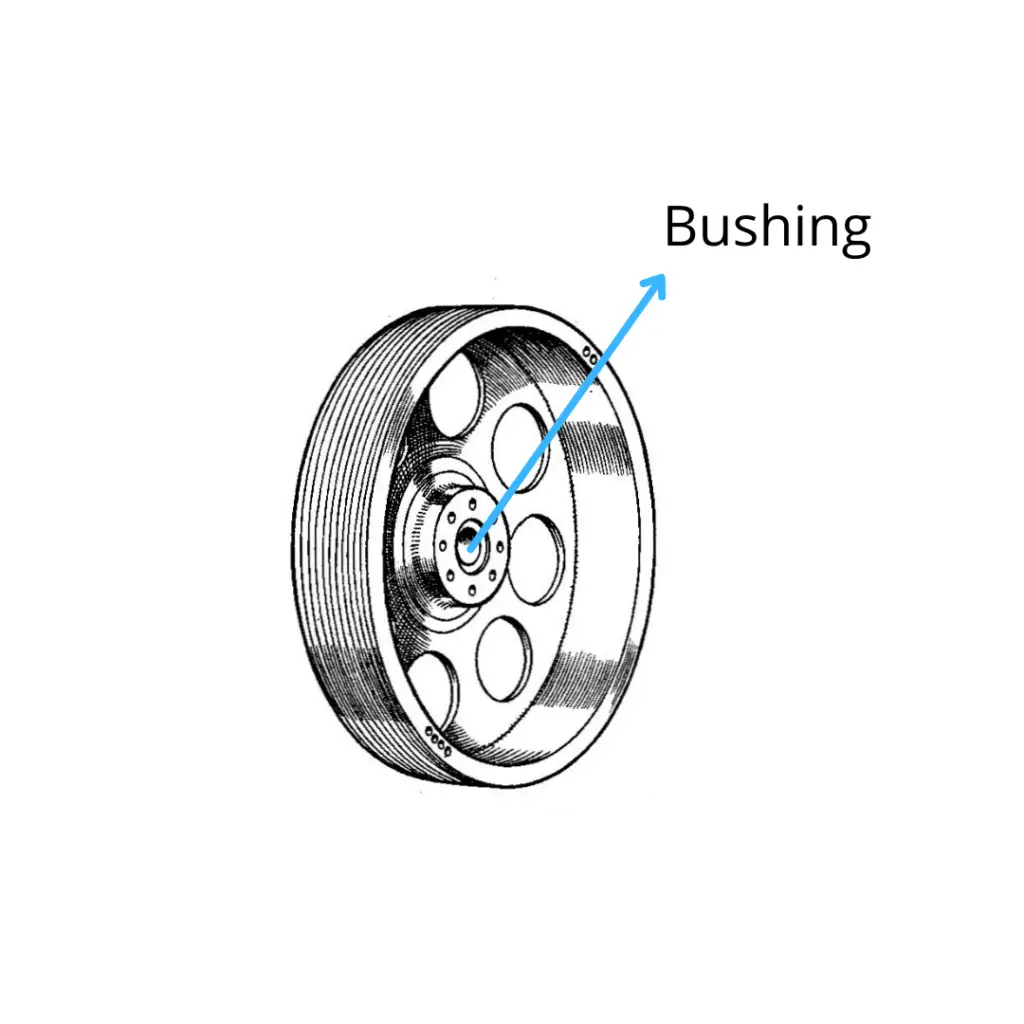
3. Lubricate the bushing with 2-3 drops of oil: do not put the oil in the drum or the clutch shoes, only lubricate the bushing and if you have some grease then put some on the washer/spacer which is present in between the drum and the spider.
4. Reassemble the clutch, simply put back all the parts together, make sure you put the washer back on between the drum and spider, otherwise the clutch will make noises. Do not disassemble other parts of the clutch, the spring can be hard to put back on.
Things to keep in mind during the process:
- The greese and the oil should not reach the drum or the shoes of the clutch.
- While taking off the snap ring, wear a safety glass to protect your eyes from the snap ring.
Step 2: Installing the spacer/Washer
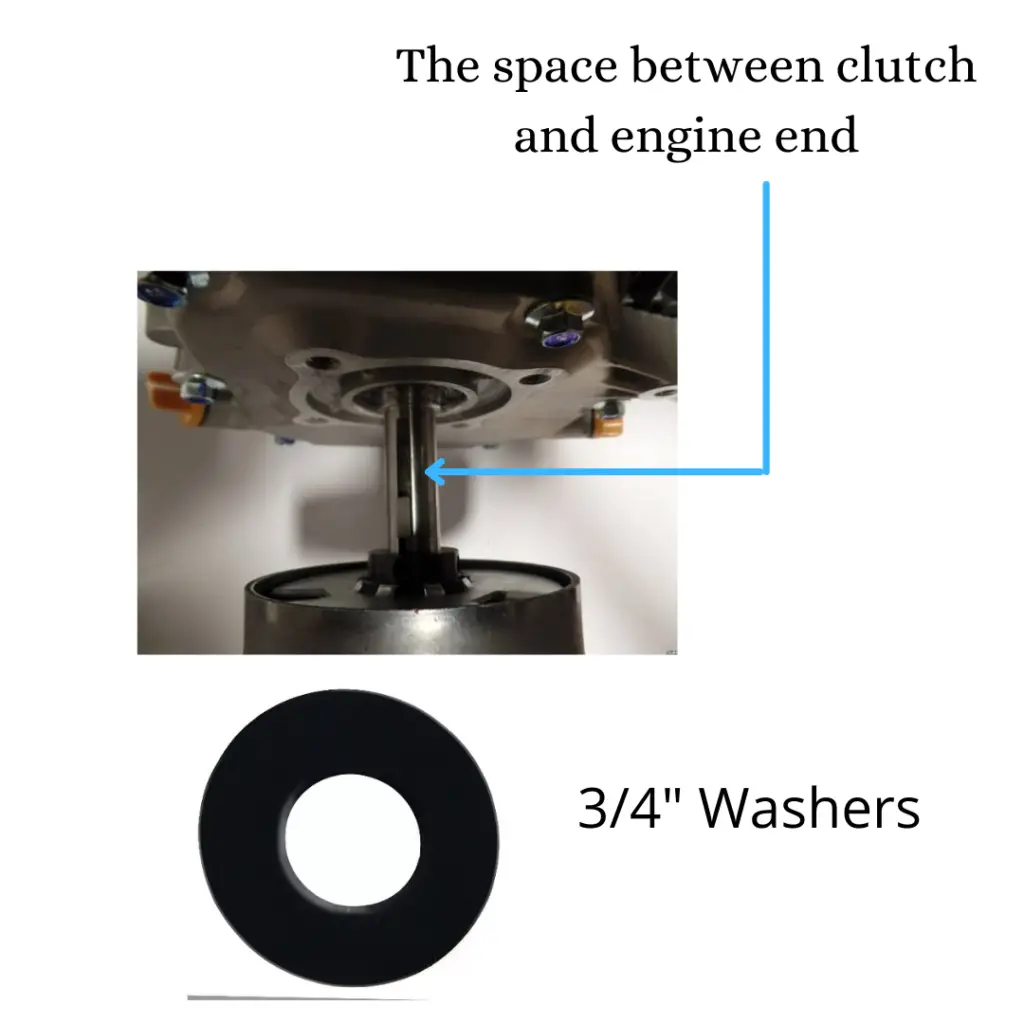
If you’ve bought a clutch that leaves spacing in between the clutch and the engine then you’ll need to fill in the extra space with a few 3/4“ washers or a spacer.
The clutch needs to be aligned with the axle otherwise the chains will go off when you’re driving.
A few 3/4” washers together will do the job for the 212 Predator Engine, or you can look for the right sized 3/4″spacer.
Step 3: Placing the Clutch onto the crankshaft
This is pretty simple, align the key in the Clutch with the slot in the shaft, you will not need any extra key since the new clutches come with a key pre-installed in them.
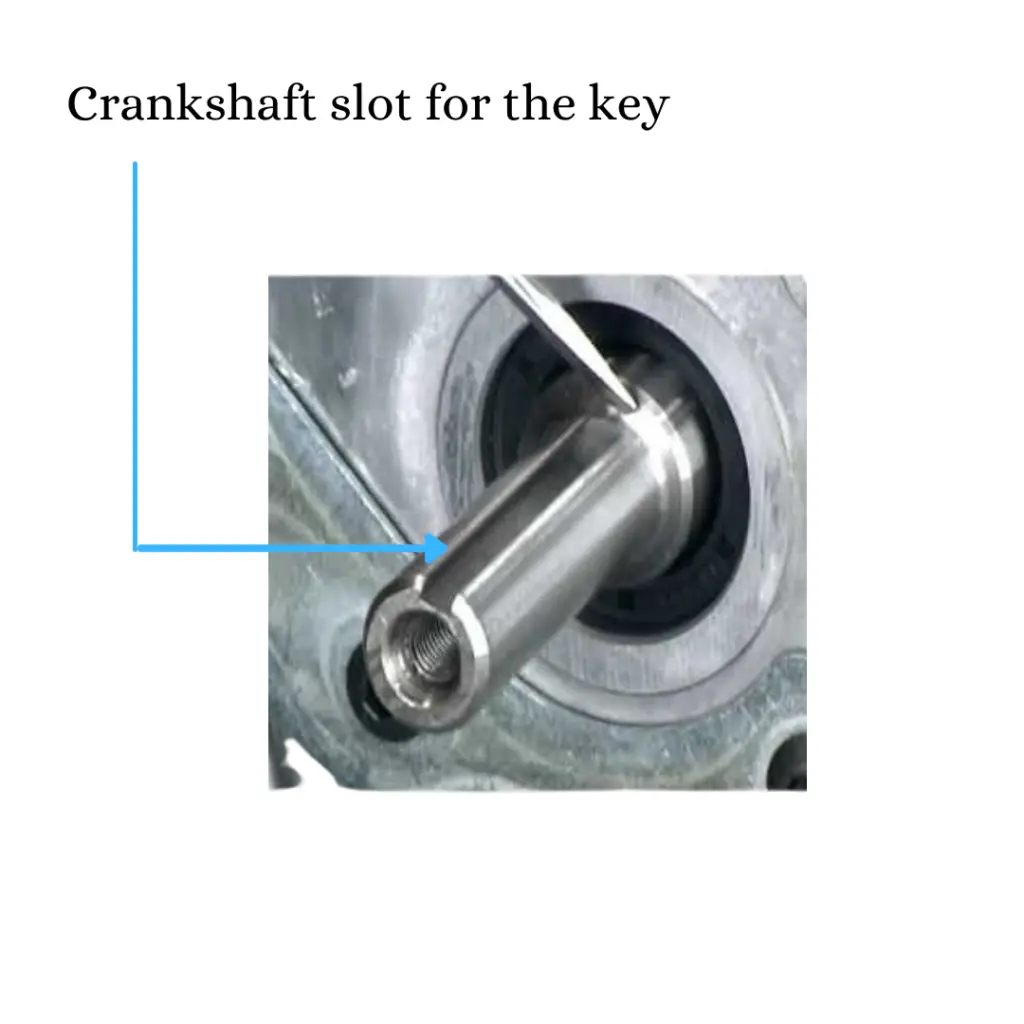
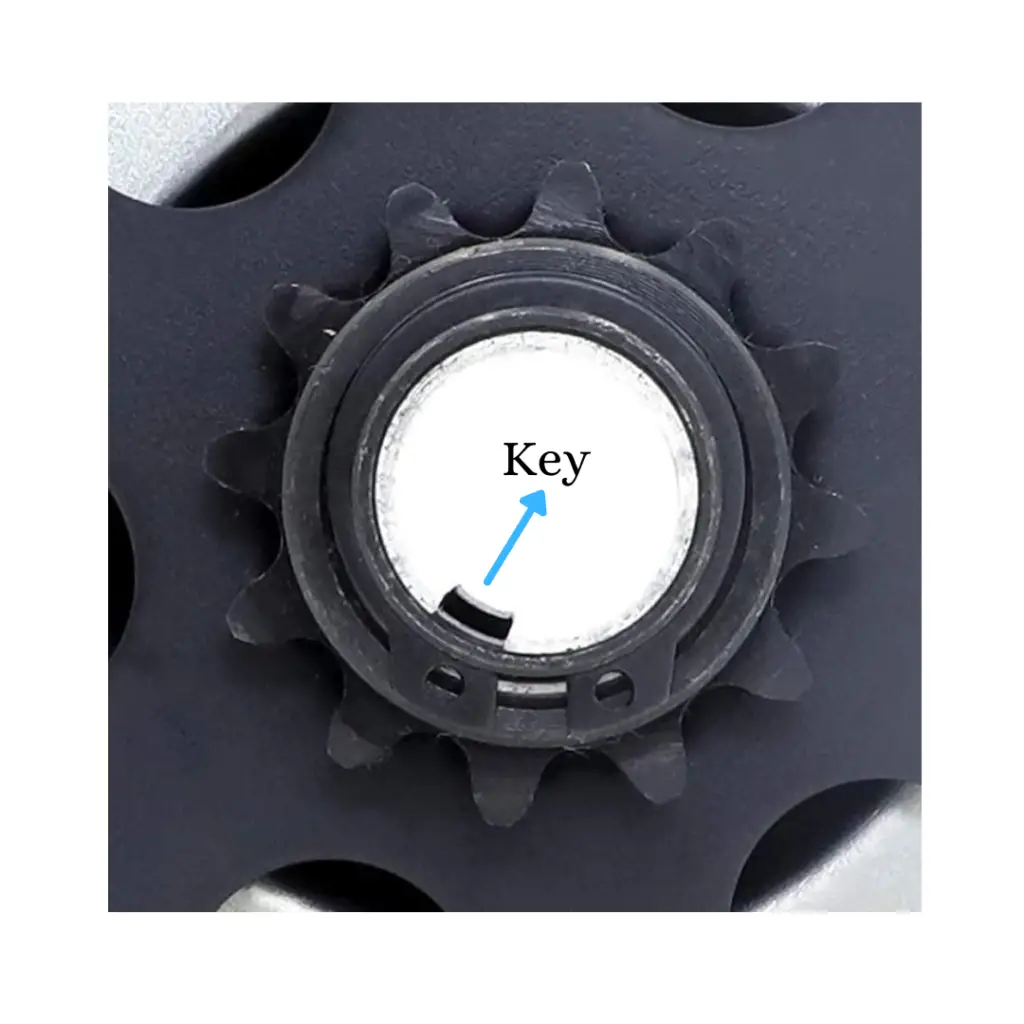
If your engine already has a preinstalled keyway in the crankshaft, then you’ll need to get it off.
One question that often comes up is, whether you can install the Clutch so that the sprocket is inwards?
Yes, you can. Just keep the alignment with the axle correct.
Step 4: Tighten the bolts
And now finally you can just go ahead and tighten the bolt and the washers you get with the clutch kit. You can use a flat head screwdriver to keep the engine from moving while tightening.
Most of the new clutches do not come with a set screw and are held onto the shaft by the bolt. But if you have an older clutch with set screws, then you’ll need to tighten the set screw to fix the clutch.
Maintenance of clutch for longer life:
The maintenance of the clutch is very important, you should be oiling after every 2-3 rides or you will end up throwing the clutch after a few use.
Oiling the Clutch:
The key part to remember about oiling is “After use” not before the use. If you oil the clutch after using the clutch, when it is hot, the oil gets sucked in easily, while if you oil it before use, the oil will just fly off when you start the engine and the clutch engages.
So how to oil?
Once you’re done riding your go-kart or minibike and the clutch is hot, here’s what you need to do:
- Find a little space behind the snap ring of the clutch
- Put 3-4 drops of oil
What not to do?
Do not ever put the oil in from the holes in the clutch’s drum, those holes are there to let the heated airs get out, if you put the oil through there, the shoes of the clutch will start to slip. Slippage in clutch causes a lot of heating and your clutch will become useless.
The lubricant should only be used inside the brass bushing.
Do not oil the clutch before use, similar to a chain, a hot clutch will soak in the oil, a cold clutch will spit it out as soon as it engages.
Which oil to use?
Do not use any synthetic oil anything with silicone or Teflon can ruin the clutch because they are anti-friction ingredients. A 30W petroleum-based oil is ideal for the clutches.
Choosing the right clutch size:
If you’re having any kind of difficulty with installation, then check if the clutch is compatible with your engine or not.
There are 3 things to keep in mind during deciding the clutch to buy:
1. Bore size
2. Number of teeth on the sprocket
3. Distance between teeth of the clutch’s sprocket
Bore size:
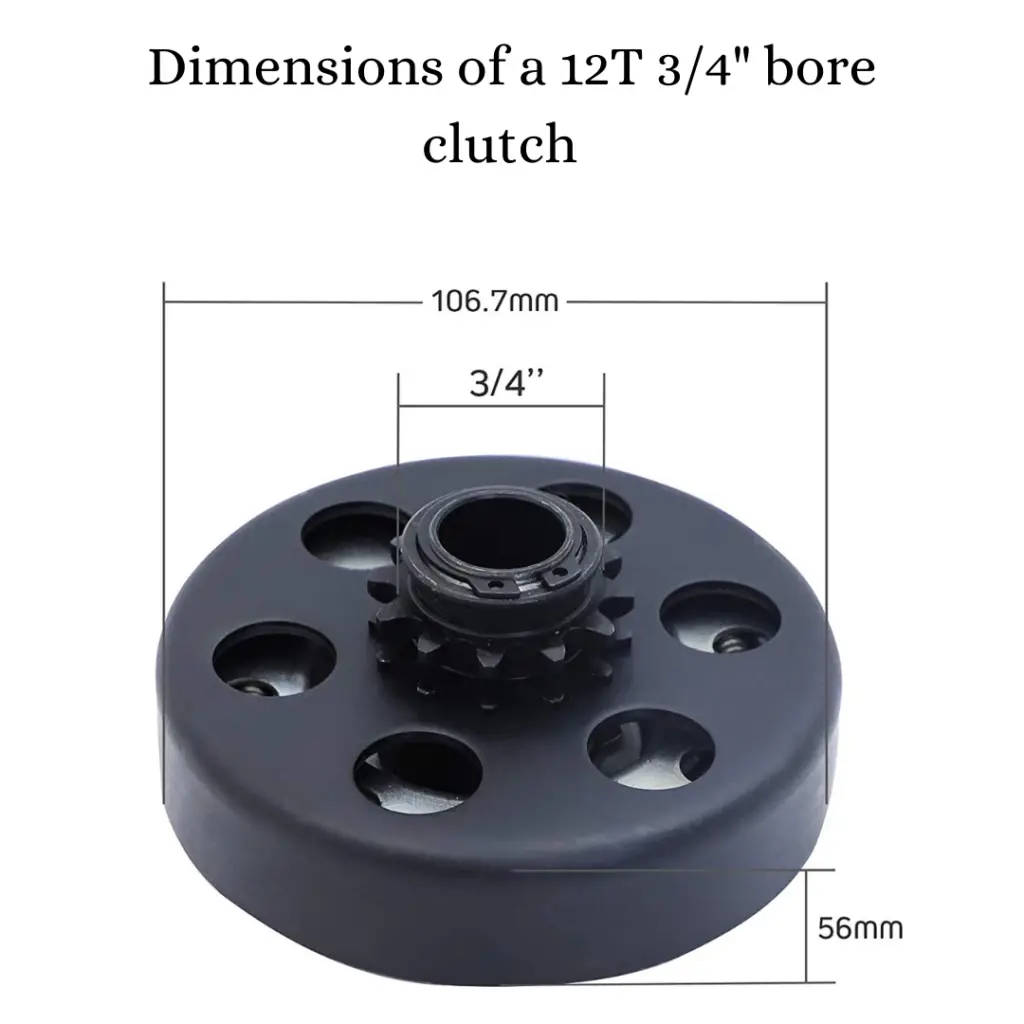
If you’re using a Predator 212 Engine, the 3/4″ Bore Clutch will fit perfectly for your engine. Other than that, it is also compatible with GX200 Briggs and Stratton, Honda GC 160, GC 190, GX 120, 140, and 160.
For the Predator 420, the bore size needed is 5/8″. Other than that if you’re using a different engine, you can find out the shaft size of the engine in their user manual or a simple google search or measure it yourself.
Sprocket Teeth:
Choosing the right amount of teeth in the sprocket is really important, if you end up choosing a 14T clutch and only have 60T in the Axle sprocket, your clutch might start to smoke after use.
Its generally recommended to keep the Gear ratio near 1:6 if your tire size is around 13″. The Gear ratio is = The number of teeth in the clutch sprocket / the number of teeth in the axle sprocket. For longer life of the clutch keep the ratio near 1:6 or you might need to change the tire size or the total weight.
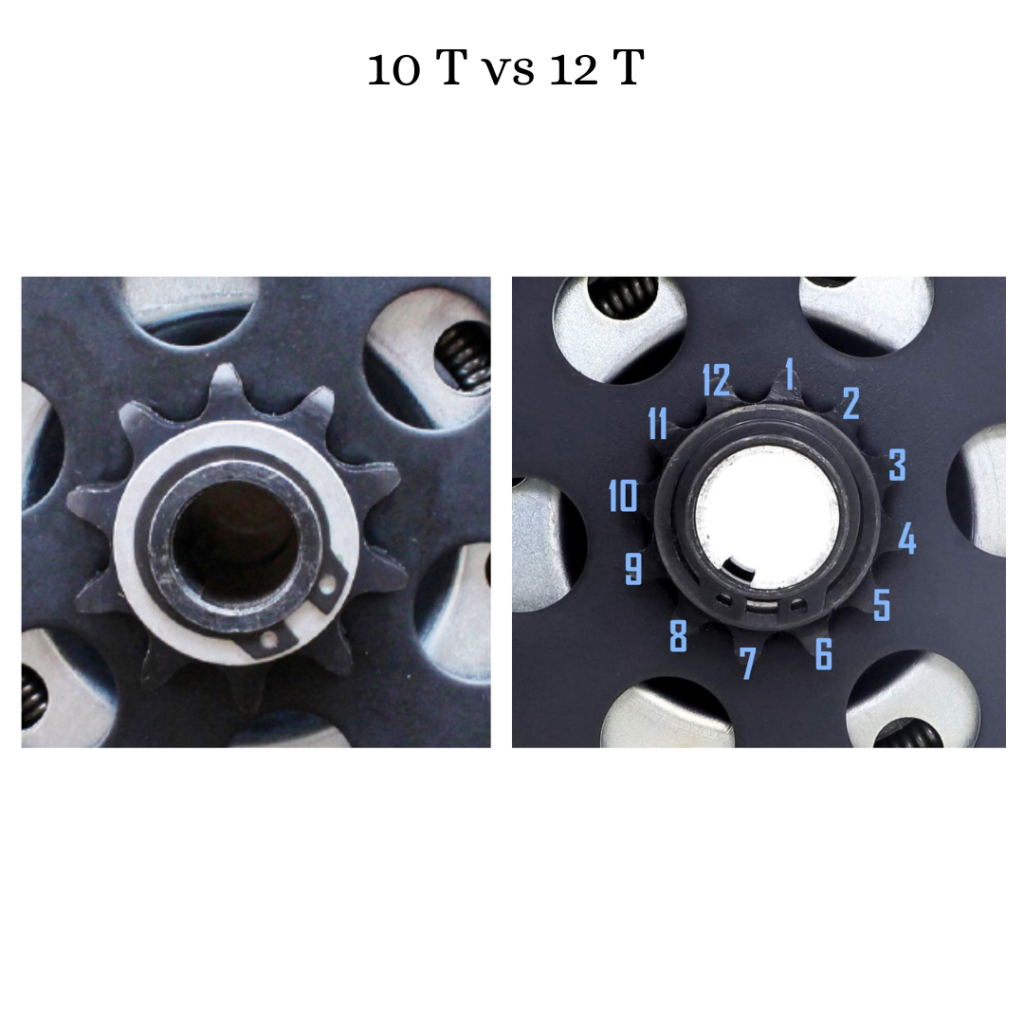
Choosing the right clutch size:
Note: If you’ve already bought the right-sized clutch, skip this section.
There are 3 things to keep in mind during deciding the clutch to buy:
1. Bore size
2. Number of teeth on the sprocket
3. Distance between teeth of the clutch’s sprocket
Bore size:

If you’re using a Predator 212 Engine, the 3/4″ Bore Clutch will fit perfectly for your engine. Other than that, it is also compatible with GX200 Briggs and Stratton, Honda GC 160, GC 190, GX 120, 140, and 160.
For the Predator 420, the bore size needed is 5/8″. Other than that if you’re using a different engine, you can find out the shaft size of the engine in their user manual or a simple google search or measure it yourself.
Sprocket Teeth:
Choosing the right amount of teeth in the sprocket is really important, if you end up choosing a 14T clutch and only have 60T in the Axle sprocket, your clutch might start to smoke after use.
Its generally recommended to keep the Gear ratio near 1:6 if your tire size is around 13″. The Gear ratio is = The number of teeth in the clutch sprocket / the number of teeth in the axle sprocket. For longer life of the clutch keep the ratio near 1:6 or you might need to change the tire size or the total weight.

Distance between sprocket teeth

This will be determined by the type of chain you can use.
If you’re using a #35 chain then you need the distance between 2 teeth to be 3/8“ for the #40,41 and 420 chains the distance required is 1/2“
FAQs:
Why does my go-kart take off when I start it?
This will happen if the clutch never disengages from the engine. If the clutch is not disengaging then it has suffered some heat damage, that is one big reason to oil the clutch regularly.
The other reason can be that your engine is idling too high, you can lower the idle speed by adjusting your carburetor’s idle screw
Go-kart clutch sparking, what to do?
If the clutch is releasing sparks, the slippage of shoes is high, causing the clutch to heat. Here are the few reasons this happens:
- The tire is too large for your gear ratio: If you’re using a big tire then make sure to decrease the gearing with it, for a normal 13” tires keep the gear ratio close to 1:6, for example, if you’re using a 14T sprocket on a 60T Axle, this gear ratio will overheat a 15” tire Go-kart.
- Hp of Engine too high for the clutch: Make sure to use the right clutch for your engine
- Too much weight
- Bad quality clutch: If you’ve corrected the gear ratio for the tire and the problem continues then it’s the quality of clutch that’s bad.
Some other habits that can ruin your clutch:
- Oiling the drum portion of the clutch
- Shortstop driving and driving too slowly
- Foot on the brake while driving.
